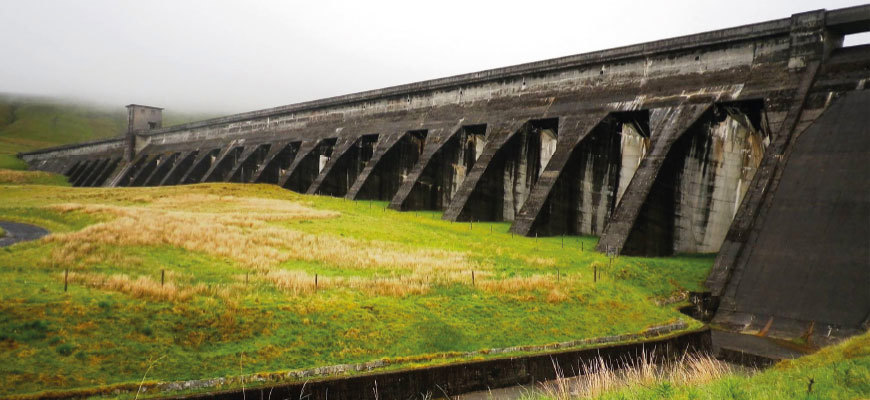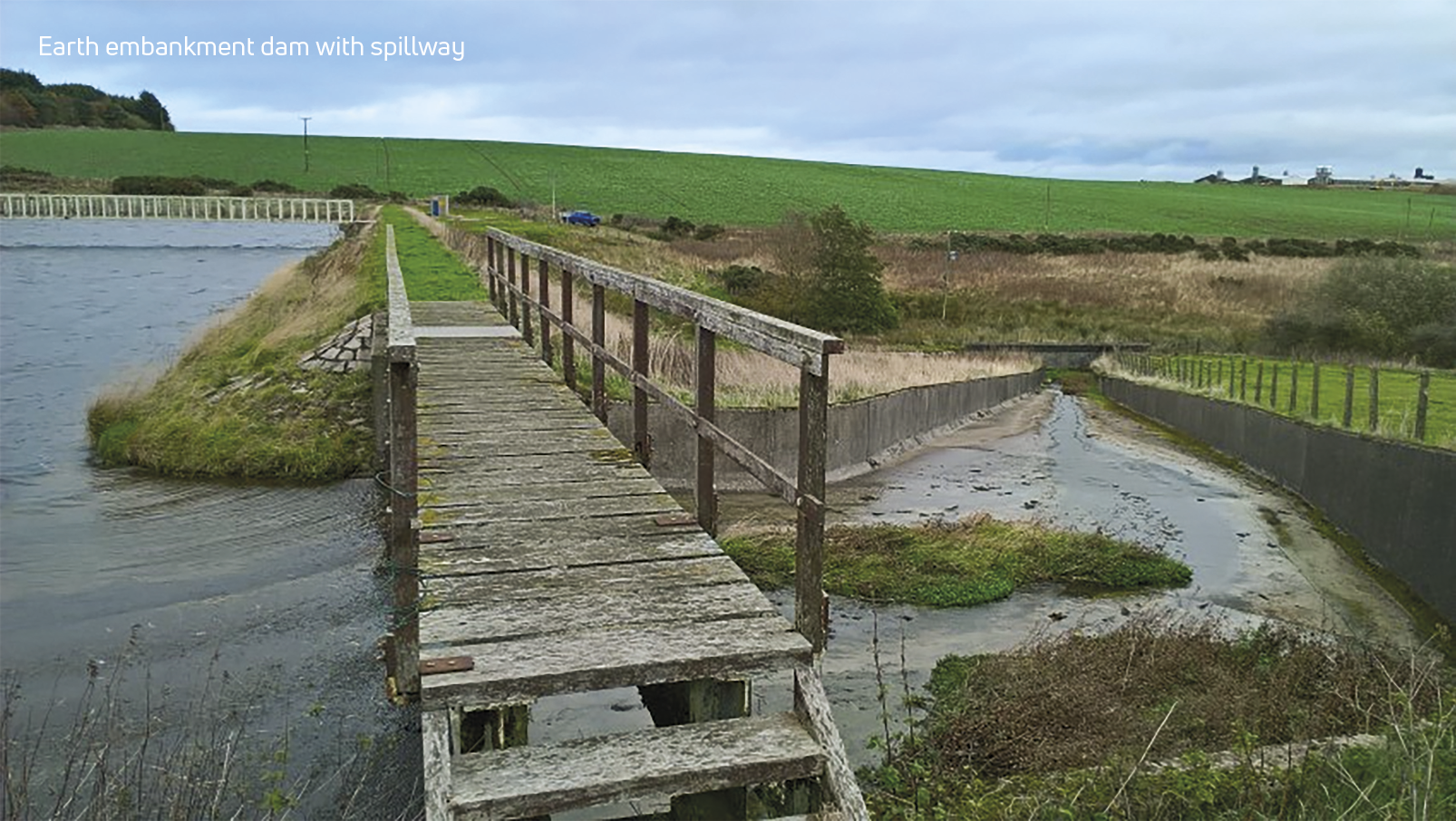Property: Reservoirs – in on the Act

While there are many positive aspects to owning or managing a reservoir, it is essential that any person who owns, manages or operates a reservoir, or is considering so doing, is fully aware of their duties and obligations under the Reservoirs (Scotland) Act 2011, and the associated costs of instructing engineers, carrying out works and ongoing maintenance. I have set these responsibilities out in summary below. SEPA has produced a number of more detailed guidance documents on the roles and responsibilities associated with owning and managing a reservoir which can be found at sepa.org.uk.
Objective behind the Act
The overall policy objective behind the regime set out in the Act is protecting public safety and public health. The Act does this by regulating the construction, alteration and management of “controlled reservoirs” as defined by the Act, according to the risk they pose from an uncontrolled release of water. The Act assigns a designation of high, medium or low risk to each registered reservoir. Low and medium risk reservoirs are subject to less regulation than those designated as high risk based on the consequences of an uncontrolled release of water.
What is a controlled reservoir?
The definition of a “controlled reservoir” is set out in ss 1 and 2 of the Act and includes structures designed or used for collecting or storing water, artificial or partly artificial lochs and any other artificial or partly artificial areas which are capable of holding 25,000 cubic metres of water above the natural level of any part of the surrounding land. (The figure set out at s 1 of the Act is 10,000 cubic metres, but the Reservoirs (Scotland) Act 2011 (Commencement No 5 and Transitional Provision) Order 2016 has the effect of modifying part 1 of the Act so that, until s 12 of the Act is fully brought into force, it applies only in relation to reservoirs which are capable of holding 25,000 cubic metres or more of water.)
A loch or other area is considered artificial (or partly artificial) if it was created or enlarged as a result of human activity.
A “controlled reservoir” includes its basin, spillway, valves, pipes and any other thing which controls the flow of the water, facilitates the storage of water in it or supports such control or storage.
SEPA regulates hundreds of controlled reservoirs throughout Scotland, including large concrete dams, natural lochs that have had their banks artificially raised and reservoirs formed with the construction of relatively small earth embankment dams.
Controlled reservoirs are used for a variety of purposes including the supply of public drinking water, production of hydroelectricity, by distilleries, amenity such as angling or sailing, and in some cases they have no practical purpose and just form part of the landscape.

Responsibility for complying with the Act
The reservoir manager
Responsibility for complying with most of the requirements of the Act is placed on “reservoir managers”. Section 3 sets out who the reservoir manager of a controlled reservoir is for the purposes of the Act.
Where Scottish Water does not manage or operate the controlled reservoir, the reservoir manager is:
(a) any person who manages or operates a reservoir or any part of it (other than the owner of the reservoir or that part of it);
(b) the owner of any part of the reservoir for which no person is reservoir manager by virtue of paragraph (a).
Managing or operating a reservoir (without prejudice to the generality of that expression) includes controlling the flow of water in or out of the reservoir.
Multiple reservoir managers
There may be situations where there is more than one reservoir manager of a controlled reservoir. In this case the requirements of the Act apply to each, but to avoid duplication and administrative burden the reservoir managers can nominate one of their number to fulfil any requirements.
There is a duty on all associated reservoir managers to co-operate with each other to manage the reservoir and comply with the requirements to which they are subject. It is an offence not to cooperate.
Charging scheme and subsistence charges
To enable SEPA to recover the costs associated with undertaking its regulatory role, there is a charging scheme in place which includes an annual subsistence fee that must be paid by reservoir managers. The annual subsistence fee is linked to the risk designation of the reservoir. For 2023-24, high risk reservoirs are charged £527, medium risk reservoirs £355 and low risk £216.
Registration requirements
SEPA is required to establish and maintain a register of controlled reservoirs. Reservoir managers are required to register specified details of their reservoirs with SEPA. Where there is a change to the registration information, e.g. change of reservoir manager, this must be registered within 28 days from the date the information changed. Registration is subject to a fee of £668. It is an offence to fail to comply with the specified registration requirements.

Risk designations and panel engineers
Different regulatory controls apply to controlled reservoirs with different risk designations. The Act regulates the construction of reservoirs, imposing a system of inspections, reports and certificates overseen by engineers appointed by an approved panel. Panels of appropriately qualified engineers have been established by Scottish ministers. The Act and Reservoirs (Scotland) Regulations 2016 set out requirements for the supervision and periodical inspection of controlled reservoirs, as well as creating incident reporting obligations and making provision for the retention of appropriate records.
Reservoirs with a high risk designation are required to have a supervising panel engineer appointed at all times and to have an inspection carried out by an All Reservoirs Panel engineer at least once every 10 years. Those reservoirs that have a medium risk designation are required to have a supervising panel engineer appointed at all times but only require an inspection
if called for by the supervising engineer. Low risk designated reservoirs have no statutory requirement for engineer appointments, but it is considered good practice to do so to ensure that they remain in good condition.
Measures in the interest of safety
Following an inspection, a report will be produced outlining the findings of the engineer, and they may include “measures in the interest of safety” (MITIOS). These are actions or tasks that are required to be undertaken by the reservoir manager, by deadlines specified in the inspection report. MITIOS could be a range of tasks from completing flood flow surveys, to removing vegetation from the dam, to undertaking physical engineering tasks on the dam or associated structures such as overflows. The associated costs for the completion of these works can be significant, particularly where large physical engineering works are required.
The report may also direct the reservoir manager to undertake various aspects of maintenance and require them to complete regular monitoring and measurements at the reservoir, all of which have associated costs that fall upon the reservoir manager.
Enforcement action
The Act gives SEPA the power to serve enforcement notices and step in and take certain actions where reservoir managers have failed to do so, as well as giving SEPA powers to act in an emergency to protect people or property from an escape of water from a controlled reservoir (whether or not the reservoir is in use). In circumstances where SEPA has taken action where the reservoir manager has failed to do so, the reservoir manager must pay SEPA expenses associated with consultation with an engineer, or where SEPA acts in an emergency the reservoir engineer must pay any expenses reasonably incurred by SEPA.
Failure to complete MITIOS is an offence and, in these circumstances, SEPA will look to take appropriate enforcement action in line with its enforcement policy.
SEPA has produced a number of guidance documents and briefings, giving further information on the role of the reservoir manager along with details on further aspects of the legislation and reservoir safety in Scotland. This information can be found in the Regulations section of its website.
Regulars
Perspectives
Features
Briefings
- Criminal court: Misdirection?
- Employment: Putting a cap on non-competes
- Family: Death and financial provision
- Human rights: Regulating news broadcast impartiality
- Pensions: Fraud protection – a report card
- Scottish Solicitors' Discipline Tribunal: August 2023
- Property: Reservoirs – in on the Act
- In-house: Trust at the top






